This article was co-authored by Tracy Zollinger Dipl. OM, L.Ac., FABORM. Tracy Zollinger (she/her) is a Licensed Acupuncturist, Herbalist, and the Founder of Island Acupuncture in the San Francisco Bay Area. With over 15 years of experience, Tracy specializes in a holistic approach to reproductive health, fertility, and pre and post-natal care. Tracy creates comprehensive treatment plans using acupuncture, herbs, nutrition, and western labs. She holds a Master of Science in Traditional Chinese Medicine from the Academy of Chinese Culture and Health Sciences and is board certified in integrative reproductive medicine, with a focus on LGBTQIA specific needs.
There are 13 references cited in this article, which can be found at the bottom of the page.
This article has been viewed 46,705 times.
Ginseng root is a popular herbal supplement that has been used for thousands of years to increase energy and boost the immune system. There are many different ways to consume ginseng. You can prepare fresh ginseng by brewing, infusing, or steaming a fresh root at home. You can also dry your own roots at home for later use. Ginseng can even be bought at stores in capsule or powder form.
Steps
Consuming Ginseng Root
-
1Brew tea. While you can always buy ginseng tea at the store, it is easy to make your own with a whole root. All you need is a teapot, strainer, and a fresh or dried root. Slice the root thinly. You will need three slices per cup of tea. Boil water before removing it from the heat.
- There are two ways of making the tea. You can add the slices to the directly to the pot or place the slices in a tea strainer. Pour the hot water over the strainer. Steep for five minutes before removing the ginseng.
- Stir in a little honey if you want a sweeter tea with all of the same health benefits.
-
2Infuse a tincture. Cut a whole fresh or dried ginseng root into smaller pieces. Add the pieces to a jar with a tight-fitting lid. Fill the jar to the top with liquor, such as rum, gin, vodka, or grain alcohol. Leave it in a cool place for 15 to 30 days.
- When using a tincture, you should only use about 5 to 15 drops at a time.
- Once you are ready to use the tincture, strain it so that there are no pieces left in the alcohol.
- Since you only use a small amount of tincture at a time, start with a smaller amount. One cup of alcohol to one root of ginseng will last indefinitely if stored in a cool, dark place.
- You can use between 90 proof and 190 proof alcohol.[1]
Advertisement -
3Take a daily supplement. Ginseng root extracts are widely available in pill form at vitamin shops, grocery stores, health food stores, and herbalists. Most supplements contain between 100 and 400mg of ginseng root, although you can take up to 3,000 mg a day for 12 weeks.[2]
- To benefit the most, take the supplement early in the day with a meal. If you take ginseng root in the evening, you may have difficulty falling asleep.
-
4Steam ginseng before eating. If you have fresh or wild ginseng, you can eat it by steaming it first. Cut up the ginseng, and place it in a vegetable steaming basket over boiling water. Let it steam for fifteen minutes. You can eat the ginseng slices themselves or use them in a recipe.
- Red ginseng (sometimes known as Korean ginseng) has already been steamed.
- You can also use a little ginseng in your cooking, similar to how you'd use fresh ginger, garlic, or turmeric.[3]
-
5Stop using if side effects develop. There may be few side effects of taking ginseng root. Consult a doctor first if you are taking any other medications or if you develop symptoms. While these side effects are rarely serious, you should stop taking ginseng root if you notice:[4]
- Nervousness or jitteriness
- Rapid heart beat
- Diarrhea
- Difficulty sleeping
- Headache
- Low blood pressure
Treating Health Conditions with Ginseng
-
1Drinking ginseng may improve alertness and energy. Ginseng root may make you feel more awake, focused, and alert during the day. To get these benefits, consume an energy drink, tea, or juice with ginseng root in it.[5]
- You can have ginseng drinks in the morning as an alternative to caffeine to help give you energy throughout the day. However, taking ginseng root at night may interfere with sleeping, so it's better to take ginseng earlier in the day.
- Ginseng is especially helpful if you tend to feel fatigued frequently.[6]
- If you are feeling nervous, anxious, jittery, or hyper, you may have taken too much. This is typically not dangerous, although you should see a doctor if you are not feeling well.
-
2Take ginseng with cancer drugs. While ginseng alone cannot treat cancer, it may be able to relieve some symptoms and slightly reduce the frequency of some tumors. Talk to your doctor before you start taking ginseng root to make sure that it will not interfere with your medications.[7]
- Ginseng may also be able to treat fatigue in cancer patients. Take daily supplements of ground ginseng root pills.[8]
- Ginseng should always be used in combination with professional treatment. Do not start taking it without talking to your doctor first.
-
3Consume ginseng root during cold and flu season. Taking a ginseng supplement twice a day during cold and flu season may be able to boost your immune system and prevent sickness. If you do get sick, the ginseng root may reduce your symptoms and make you feel better faster.[9]
- If you are over 65, your best chance to avoid the flu is to get a flu shot.
-
4Avoid it if you have certain health conditions. Ginseng root is considered fairly safe for use, and it is not known to interact with many medications. That said, for people with certain conditions or prescriptions, ginseng root may cause problems.[10]
- Ginseng root may interact with insulin, anti-psychotic drugs, and blood thinners, such as Warfarin.
- Get advice from a doctor or herbalist before taking ginseng if you have high blood pressure or you're prone to a stroke.[11]
- Ginseng root is a stimulant. If you use other stimulants, such as caffeine, or if you have a heart condition, you may want to avoid using it.
- Ginseng root’s safety during pregnancy is not known. It may be best to avoid if you are pregnant.
Drying Fresh Ginseng Root
-
1Rinse the root. If you have harvested your own ginseng root, wash it as soon after harvest as possible. Fill a bowl or bucket with water. Gently dip and swish the root in the water. Leave it out to air-dry away from sunlight.[12]
- Do not scrub or roughly wash the ginseng, as this might break the fragile skin.
-
2Steam the root if you want. Ginseng that has been steamed before being dried is called red ginseng whereas white ginseng has only been dried, not steamed. If you want red ginseng, then you should steam the root for one to three hours.[13]
- You can use a pot and a vegetable steamer basket, but make sure that there is enough water to steam the root for the proper amount of time.
- This step is optional. If your recipe calls for white ginseng, go straight to drying out the root.
-
3Dry the root. To dry the roots, place a rack or screen in a drying box or closet. Place the roots on the screen, making sure that they do not touch one another. Keep the temperature at 90–95 °F (32–35 °C) for two weeks. [14]
- Do not use an oven, microwave, or window to dry the roots, as these may dry them out too quickly. Keep the roots away from the sun as you dry them.
- Because ginseng roots must dry slowly over two weeks, you should not use your oven. Instead, you can use a a special herb dehydrator. This box will dry your roots out at a low, consistent temperature.
Expert Q&A
Did you know you can get expert answers for this article?
Unlock expert answers by supporting wikiHow
-
QuestionHow should I take ginseng?
 Tracy Zollinger Dipl. OM, L.Ac., FABORMTracy Zollinger (she/her) is a Licensed Acupuncturist, Herbalist, and the Founder of Island Acupuncture in the San Francisco Bay Area. With over 15 years of experience, Tracy specializes in a holistic approach to reproductive health, fertility, and pre and post-natal care. Tracy creates comprehensive treatment plans using acupuncture, herbs, nutrition, and western labs. She holds a Master of Science in Traditional Chinese Medicine from the Academy of Chinese Culture and Health Sciences and is board certified in integrative reproductive medicine, with a focus on LGBTQIA specific needs.
Tracy Zollinger Dipl. OM, L.Ac., FABORMTracy Zollinger (she/her) is a Licensed Acupuncturist, Herbalist, and the Founder of Island Acupuncture in the San Francisco Bay Area. With over 15 years of experience, Tracy specializes in a holistic approach to reproductive health, fertility, and pre and post-natal care. Tracy creates comprehensive treatment plans using acupuncture, herbs, nutrition, and western labs. She holds a Master of Science in Traditional Chinese Medicine from the Academy of Chinese Culture and Health Sciences and is board certified in integrative reproductive medicine, with a focus on LGBTQIA specific needs.
Licensed Herbalist & Acupuncturist
Warnings
- Always consult your doctor before starting herbal supplements.⧼thumbs_response⧽
References
- ↑ http://www.wildernesscollege.com/tincture-recipes.html
- ↑ https://medlineplus.gov/druginfo/natural/967.html
- ↑ Tracy Zollinger Dipl. OM, L.Ac., FABORM. Licensed Herbalist & Acupuncturist. Expert Interview. 6 October 2020.
- ↑ https://medlineplus.gov/druginfo/natural/967.html
- ↑ https://www.drugs.com/npp/ginseng.html
- ↑ Tracy Zollinger Dipl. OM, L.Ac., FABORM. Licensed Herbalist & Acupuncturist. Expert Interview. 6 October 2020.
- ↑ https://www.drugs.com/npp/ginseng.html
- ↑ https://www.cancer.gov/about-cancer/treatment/side-effects/fatigue/fatigue-pdq#section/_40
- ↑ https://www.aafp.org/afp/2003/1015/p1539.html
- ↑ https://www.nccih.nih.gov/health/asian-ginseng
- ↑ Tracy Zollinger Dipl. OM, L.Ac., FABORM. Licensed Herbalist & Acupuncturist. Expert Interview. 6 October 2020.
- ↑ http://ohioline.osu.edu/factsheet/F-64
- ↑ https://www.ncbi.nlm.nih.gov/pmc/articles/PMC4593794/
- ↑ https://ohioline.osu.edu/factsheet/F-64
- ↑ https://www.ncbi.nlm.nih.gov/pmc/articles/PMC3659633/
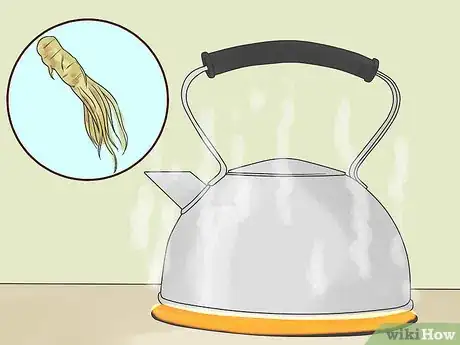
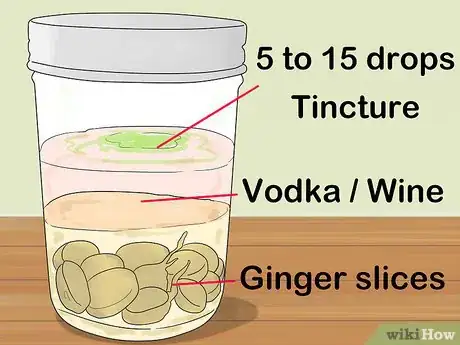







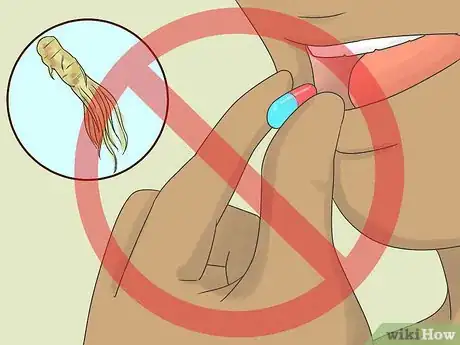

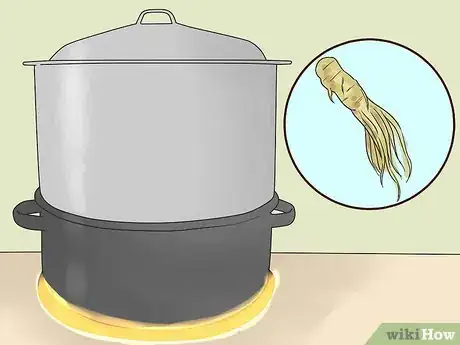




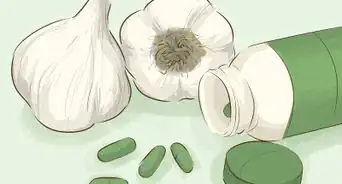





















































Medical Disclaimer
The content of this article is not intended to be a substitute for professional medical advice, examination, diagnosis, or treatment. You should always contact your doctor or other qualified healthcare professional before starting, changing, or stopping any kind of health treatment.
Read More...